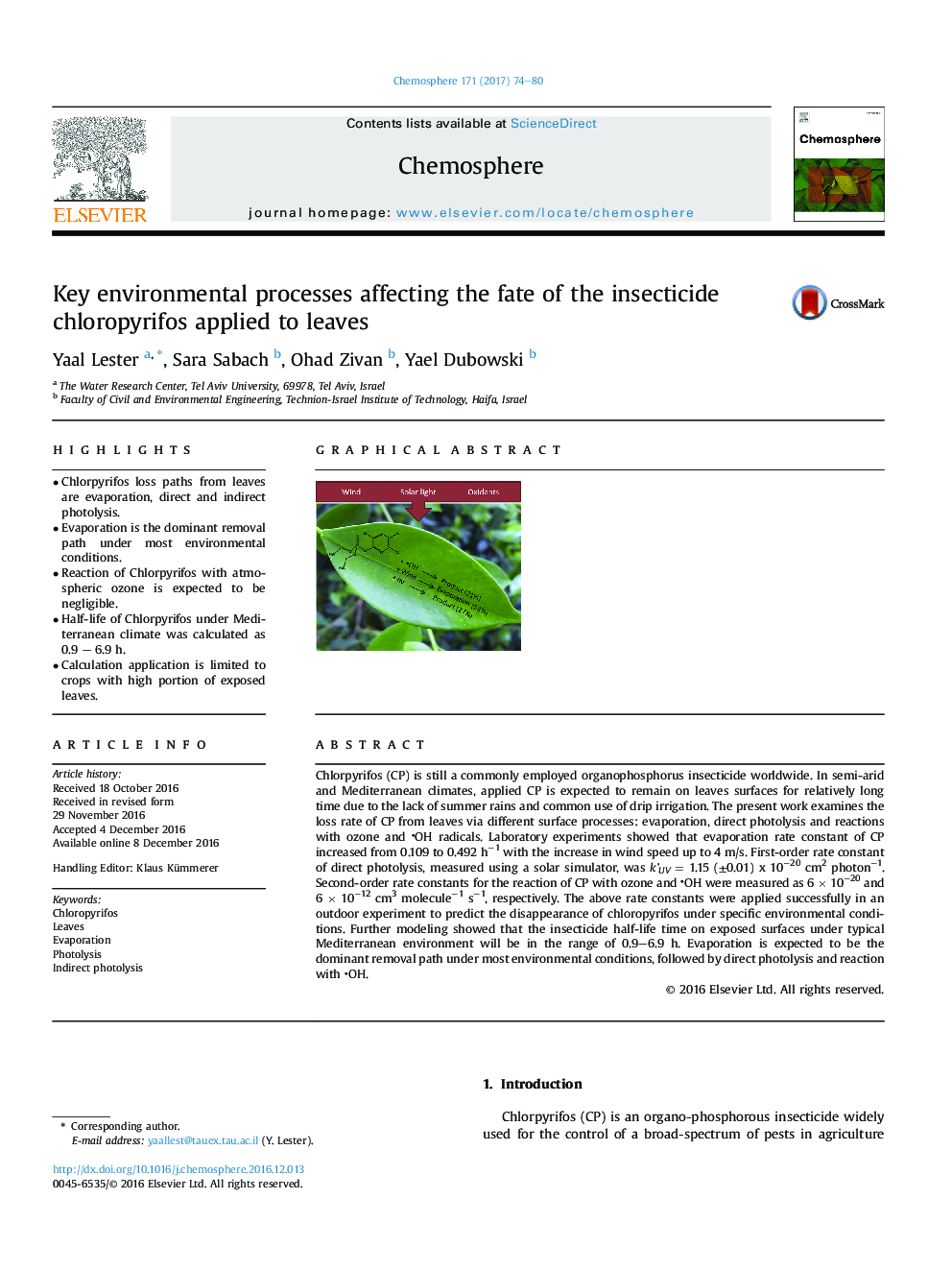| کد مقاله | کد نشریه | سال انتشار | مقاله انگلیسی | نسخه تمام متن |
|---|---|---|---|---|
| 5746325 | 1618800 | 2017 | 7 صفحه PDF | دانلود رایگان |
- Chlorpyrifos loss paths from leaves are evaporation, direct and indirect photolysis.
- Evaporation is the dominant removal path under most environmental conditions.
- Reaction of Chlorpyrifos with atmospheric ozone is expected to be negligible.
- Half-life of Chlorpyrifos under Mediterranean climate was calculated as 0.9 - 6.9Â h.
- Calculation application is limited to crops with high portion of exposed leaves.
Chlorpyrifos (CP) is still a commonly employed organophosphorus insecticide worldwide. In semi-arid and Mediterranean climates, applied CP is expected to remain on leaves surfaces for relatively long time due to the lack of summer rains and common use of drip irrigation. The present work examines the loss rate of CP from leaves via different surface processes: evaporation, direct photolysis and reactions with ozone and OH radicals. Laboratory experiments showed that evaporation rate constant of CP increased from 0.109 to 0.492 hâ1 with the increase in wind speed up to 4 m/s. First-order rate constant of direct photolysis, measured using a solar simulator, was k'UV = 1.15 (±0.01) x 10â20 cm2 photonâ1. Second-order rate constants for the reaction of CP with ozone and OH were measured as 6 Ã 10â20 and 6 Ã 10â12 cm3 moleculeâ1 sâ1, respectively. The above rate constants were applied successfully in an outdoor experiment to predict the disappearance of chloropyrifos under specific environmental conditions. Further modeling showed that the insecticide half-life time on exposed surfaces under typical Mediterranean environment will be in the range of 0.9-6.9 h. Evaporation is expected to be the dominant removal path under most environmental conditions, followed by direct photolysis and reaction with OH.
222
Journal: Chemosphere - Volume 171, March 2017, Pages 74-80
